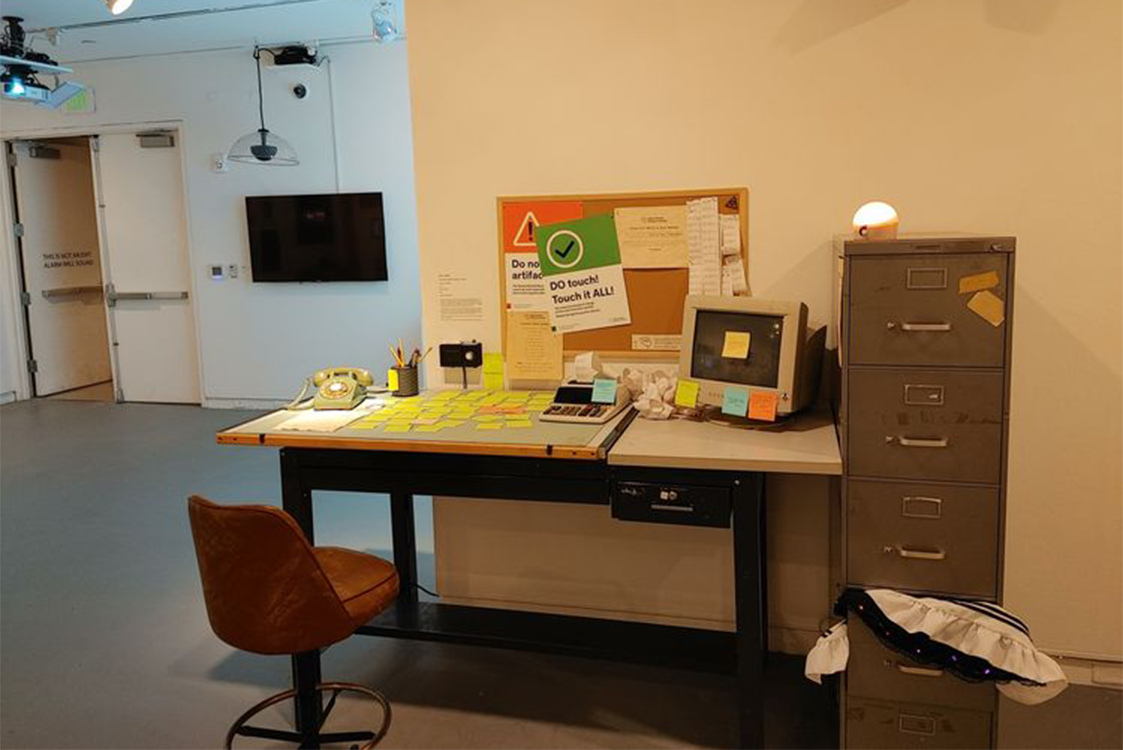Thesis - The Absent Minded Research Institute
Notice: this page is a work in progress. I plan on adding more documentation demonstrating the interactive parts of this piece in the future, stay tuned!
NONFICTION WARNING: This is an overview of the project I made for my senior thesis, which contains a parafictional narrative. There is a version of this page written from the perspective of that narrative, which you can read here.
On Display
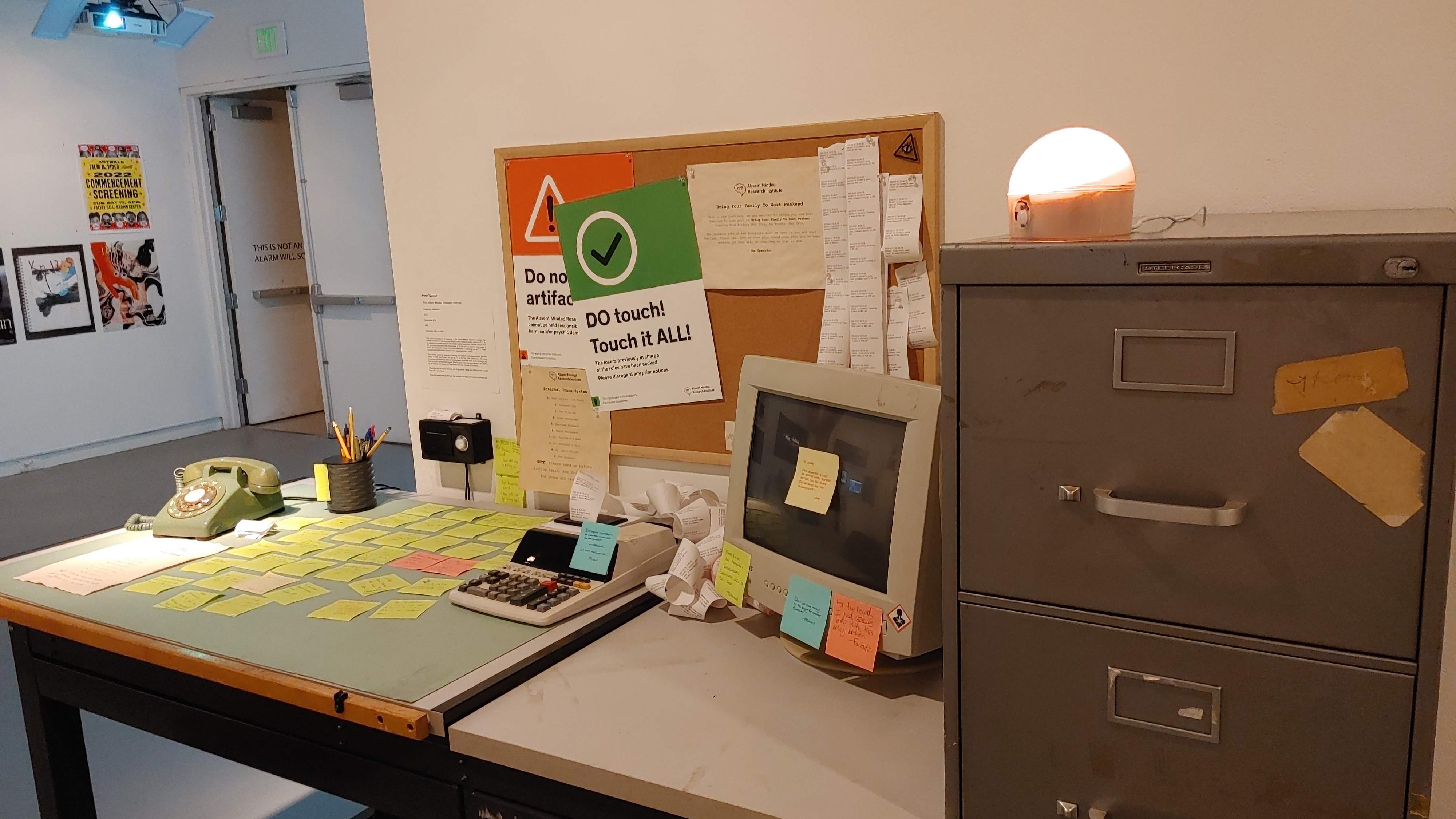
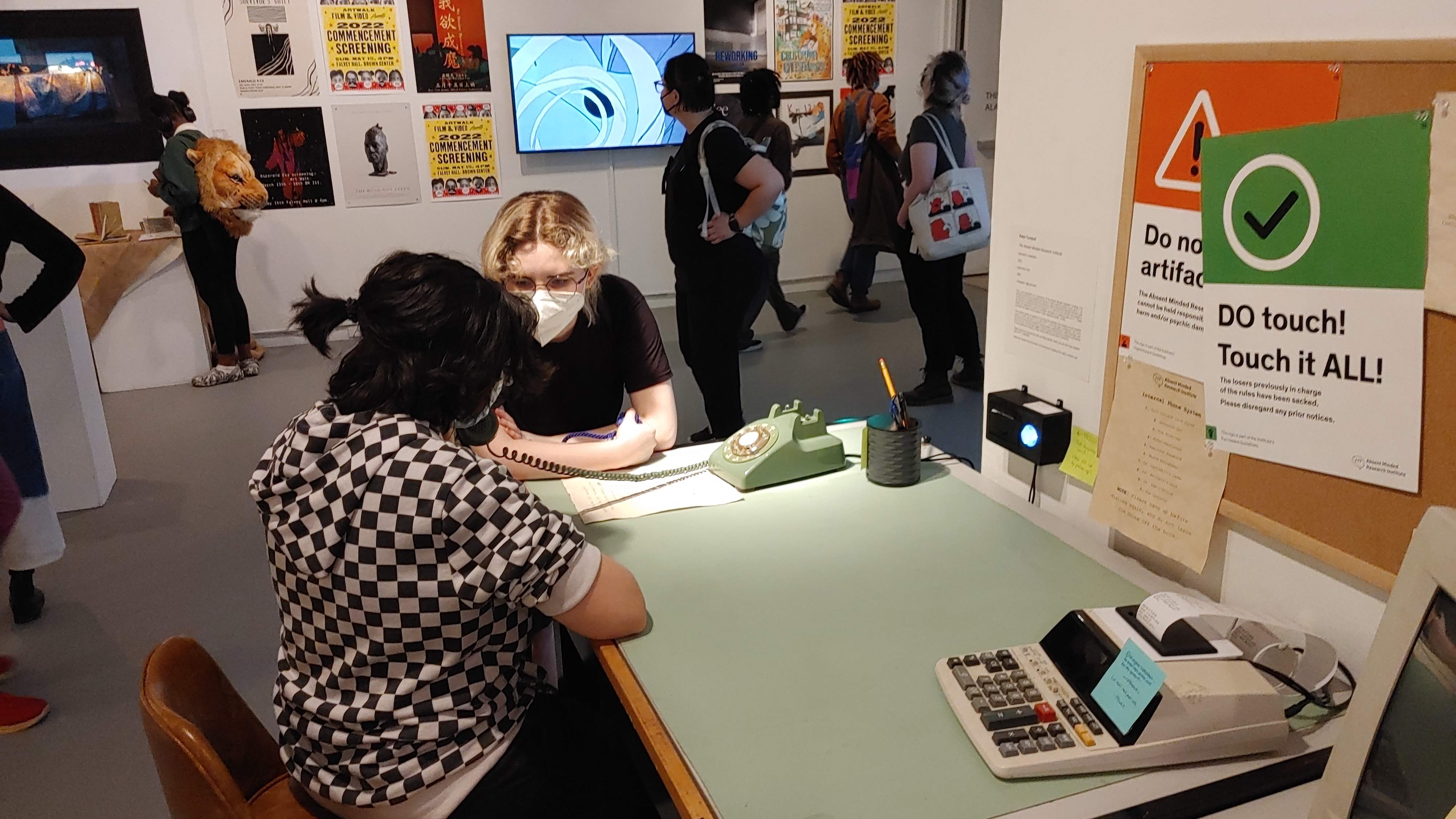
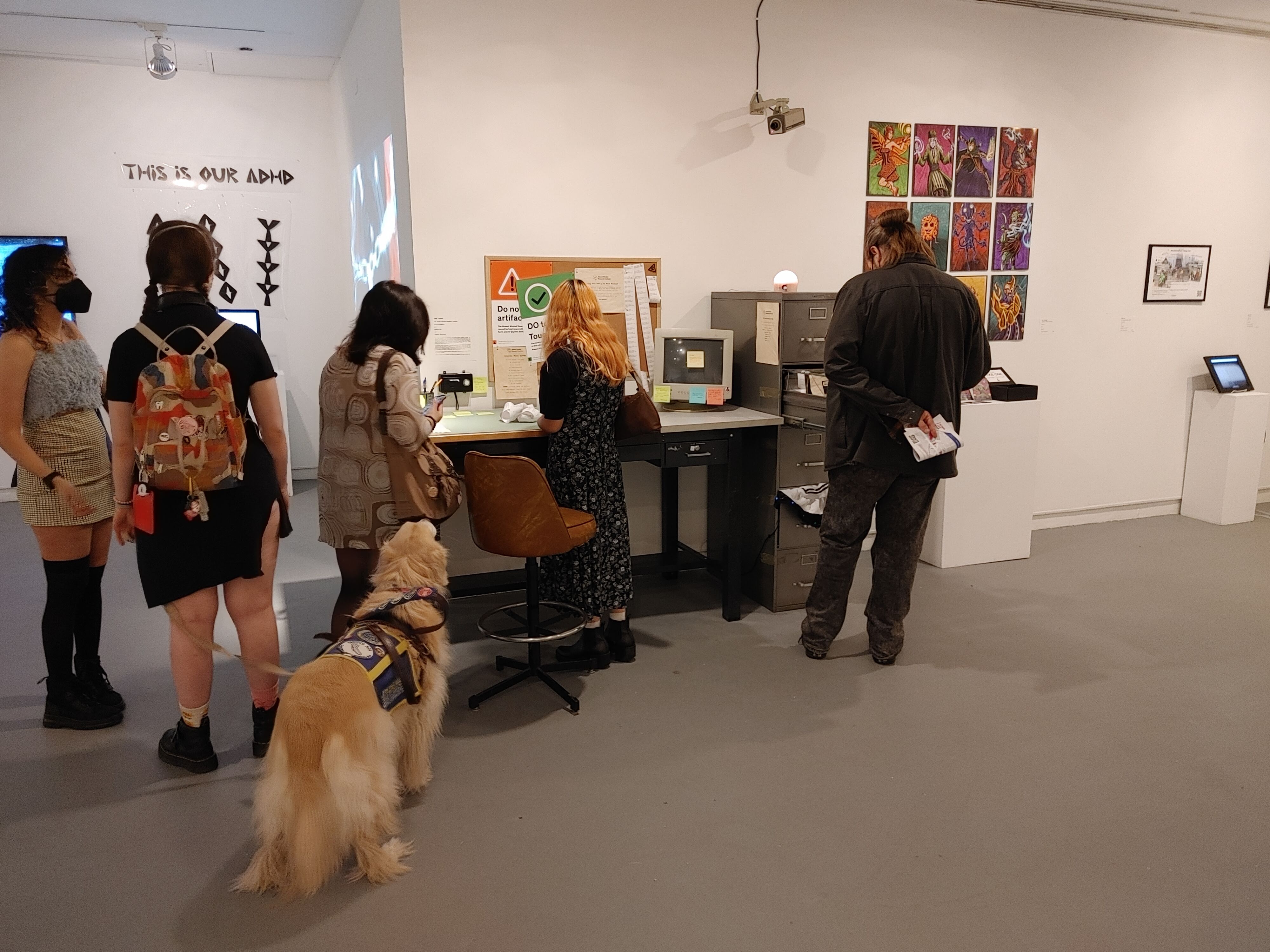
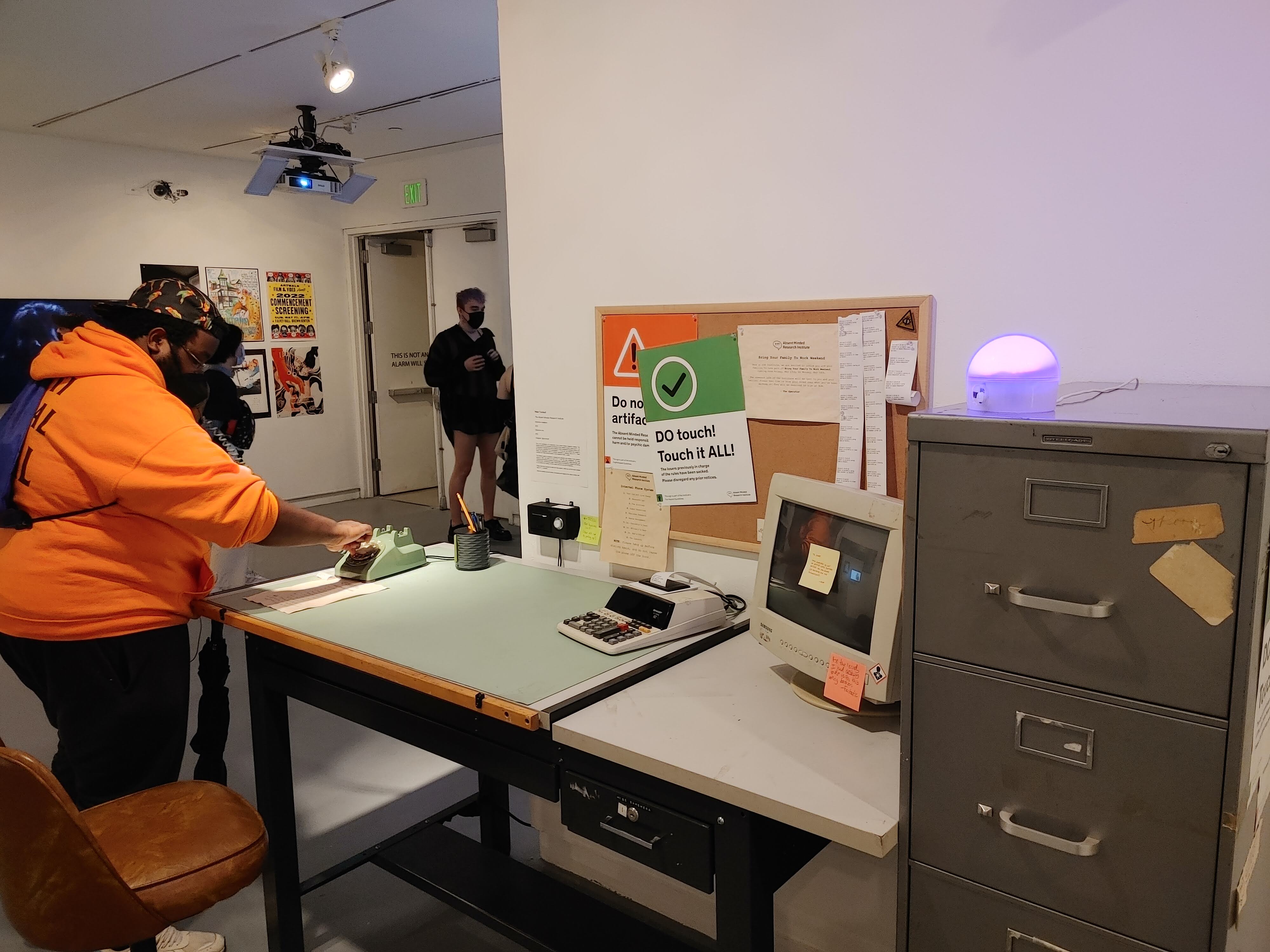
Overview
This is my thesis piece I made to complete my degree in Interactive Arts from the Maryland Institute College of Art (MICA). It is an interactive installation piece with a parafictional narrative component, about a mysterious institute that is tracking my every move. In the context of the narrative, I am referred to as the “test subject”, or simply PT.
Viewers are encouraged to touch and play with the various elements of the piece. It incorporates numerous different skills that I picked up during my time at MICA, including digital design and fabrication, as well as a lot of electronics and coding. Most notable is the rotary phone, which has been modified with a Raspberry Pi running Python code that interprets the numbers being dialed, and plays back different audio (mostly voice-acted dialogue of the researchers at the institute) to the listener as needed.
Wall Text
This is the workstation of a researcher at the Absent Minded Research Institute. The Institute monitors the successes and failures of their research subject, known as P.T., as he attempts to navigate living with his attention deficit hyperactivity disorder (ADHD), and the executive dysfunction that accompanies it. To that end, the Institute has created a facility and assembled a team of scientists dedicated to collecting data on P.T. These scientists are highly-trained experts in their respective fields…mostly.
The Institute spared no expense in ensuring the extraction and analysis of any possible source of data, and there is no part of P.T.’s life that goes unobserved. His every movement and behavior is tracked, including sleep, medicinal input, waste discharge, and food and drink, all exactingly logged. What the goal of this laborious research and testing is, the Institute isn’t saying, but they surely have only the best of intentions.
Please feel free to peruse the desk and filing cabinet, where you will find these detailed logs of P.T.’s activities.
While the Institute may be fictional, the tracking and logging of these patterns is entirely real.
Display Elements
Rotary Phone
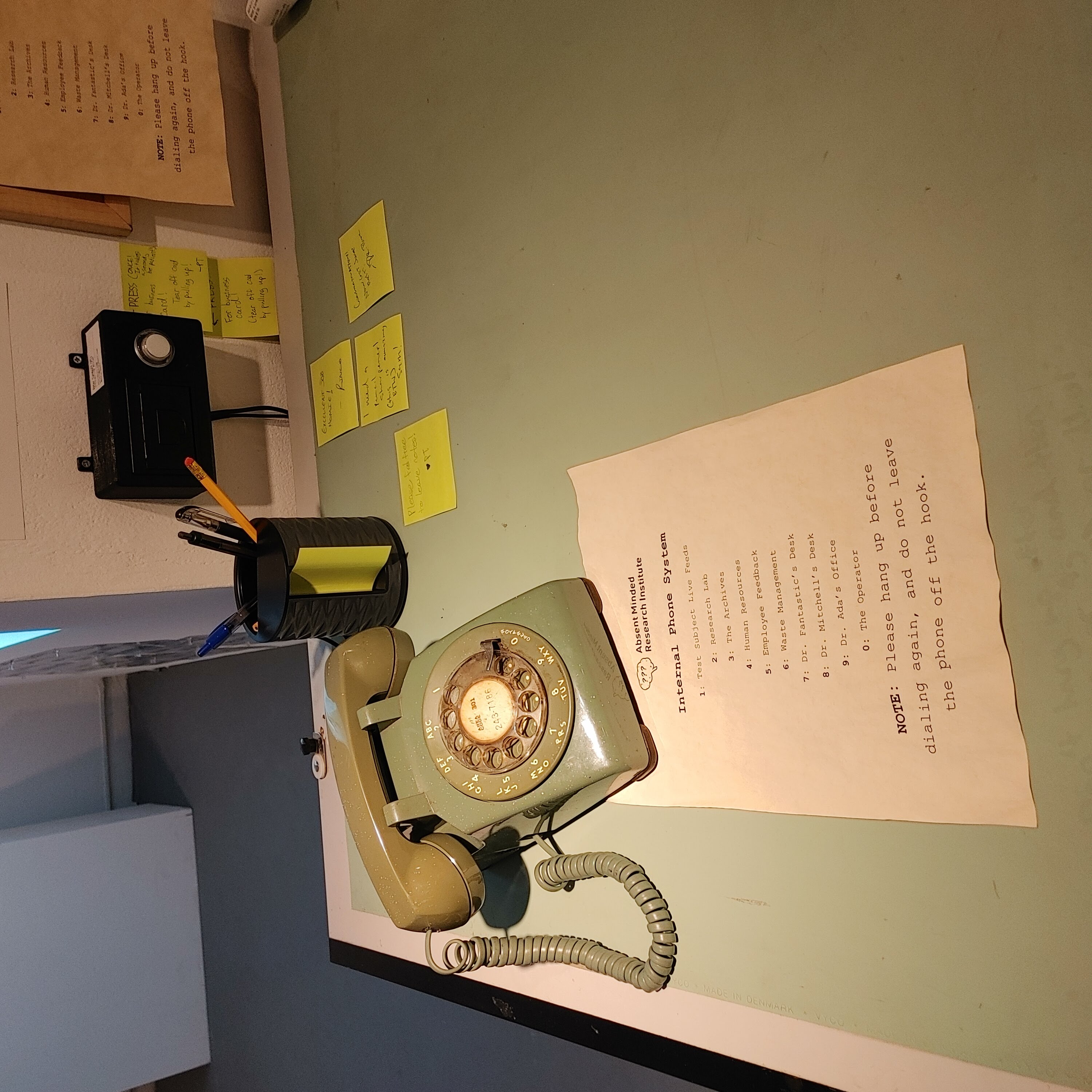
This is the centerpiece of the installation. I used a 1973 Western Electric Model 500 rotary telephone, but it’s not just a static prop! Visitors can use the phone to dial other departments in the facility (by referencing the handy phone tree menu on the desk), and hear various snippets of dialogue from the researchers at the institute, as they continue their studies on their subject.
The phone will also occasionally ring when someone walks by, to entice them to pick it up!
The phone is probably the most complex piece of the project. The Raspberry Pi it uses as a brain has several tasks:
- Accepting physical input from the phone itself, monitoring if the receiver is picked up, what number is dialed, etc.
- Communicating back and forth with the backend, so the phone’s behavior can be monitored and controlled remotely
- Playing back the appropriate audio as needed, and returning to an idle state when playback ends
- Actually making the phone ring!
As you might imagine, this was not easy. In particular, getting the phone to ring using a Raspberry Pi (which by default can only really output 5 volts) was quite a challenge.
Thermal Printer Status Log
Please note: the log will attempt to fetch data every 30 seconds, and timestamps are in UTC.
This thermal printer uses a Raspberry Pi running a Python script to retrieve my current activity status (walking, sleeping, eating, listening to music, etc…), as well as my current location, and print out a live log of my behavior.
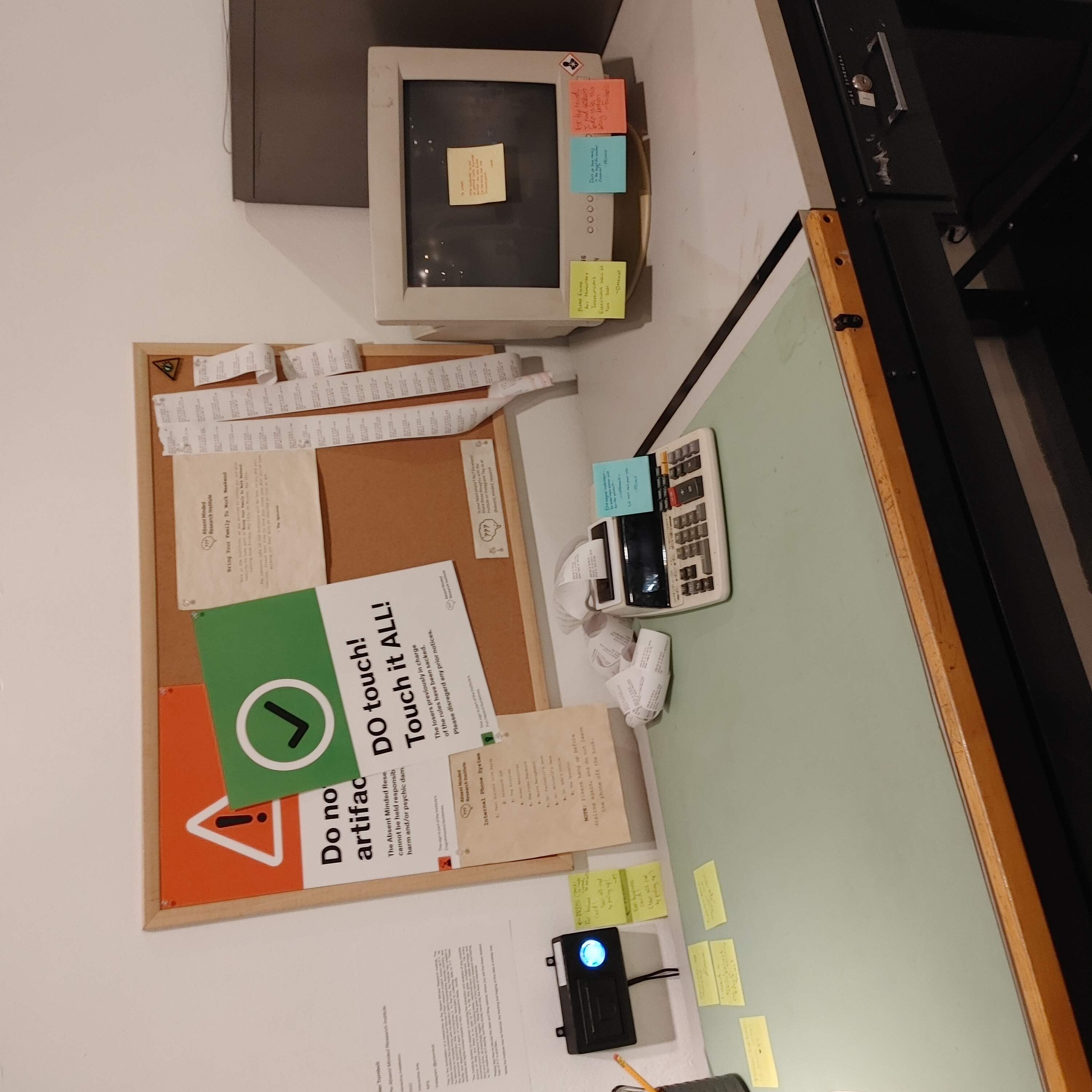
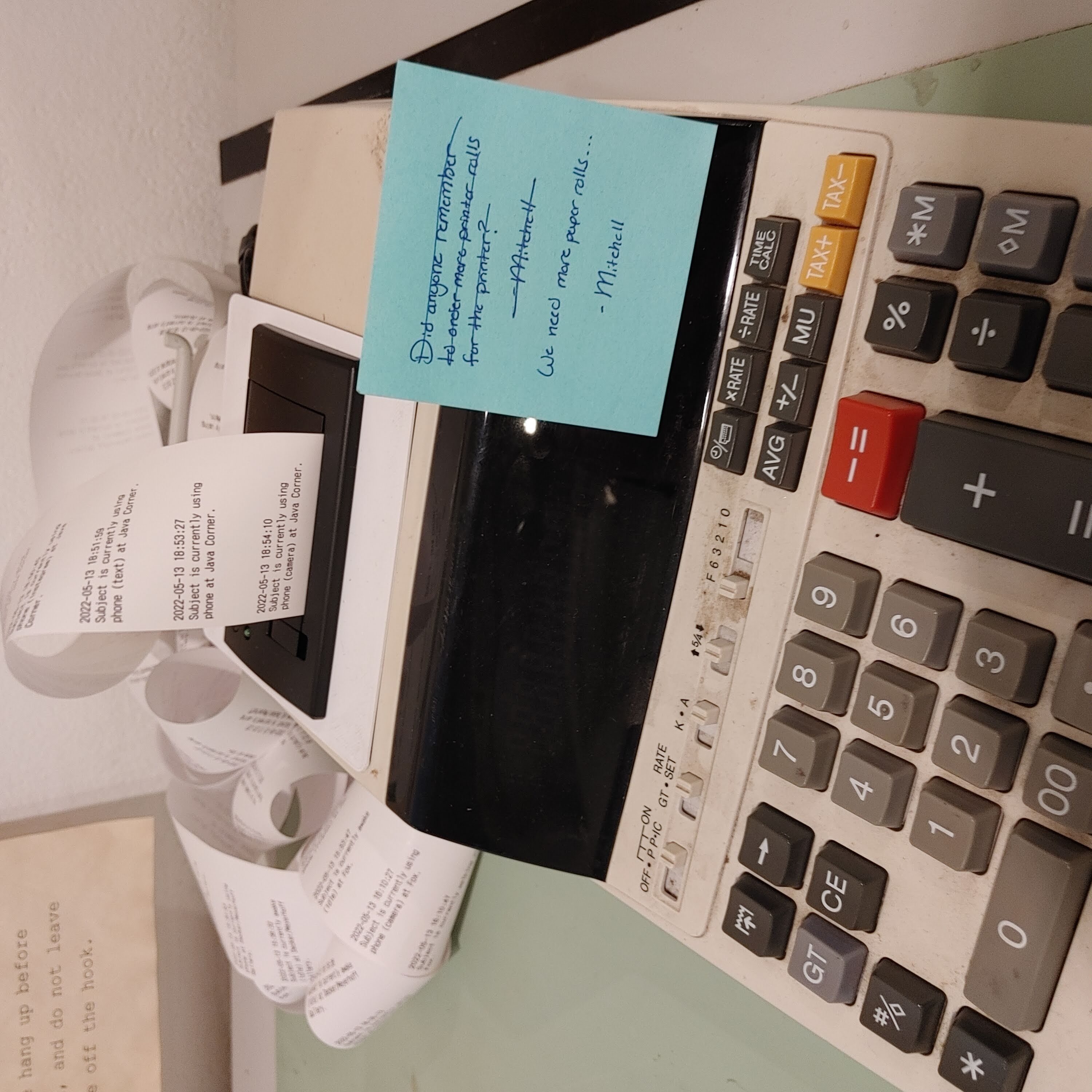
Notification Orb
This is live! Please note: the “orb” will attempt to fetch data every 15 seconds.
The “notification orb” perches on top of the filing cabinet, and serves two functions: it changes colors based on the most recent notification I received on my phone (you can see a key for the different colors in the images below), and a small motion sensor inside the housing also serves as a way to monitor movement near the piece in the gallery, and was used to set off other parts of the piece, most notably, by causing the rotary phone to ring when people walked by.
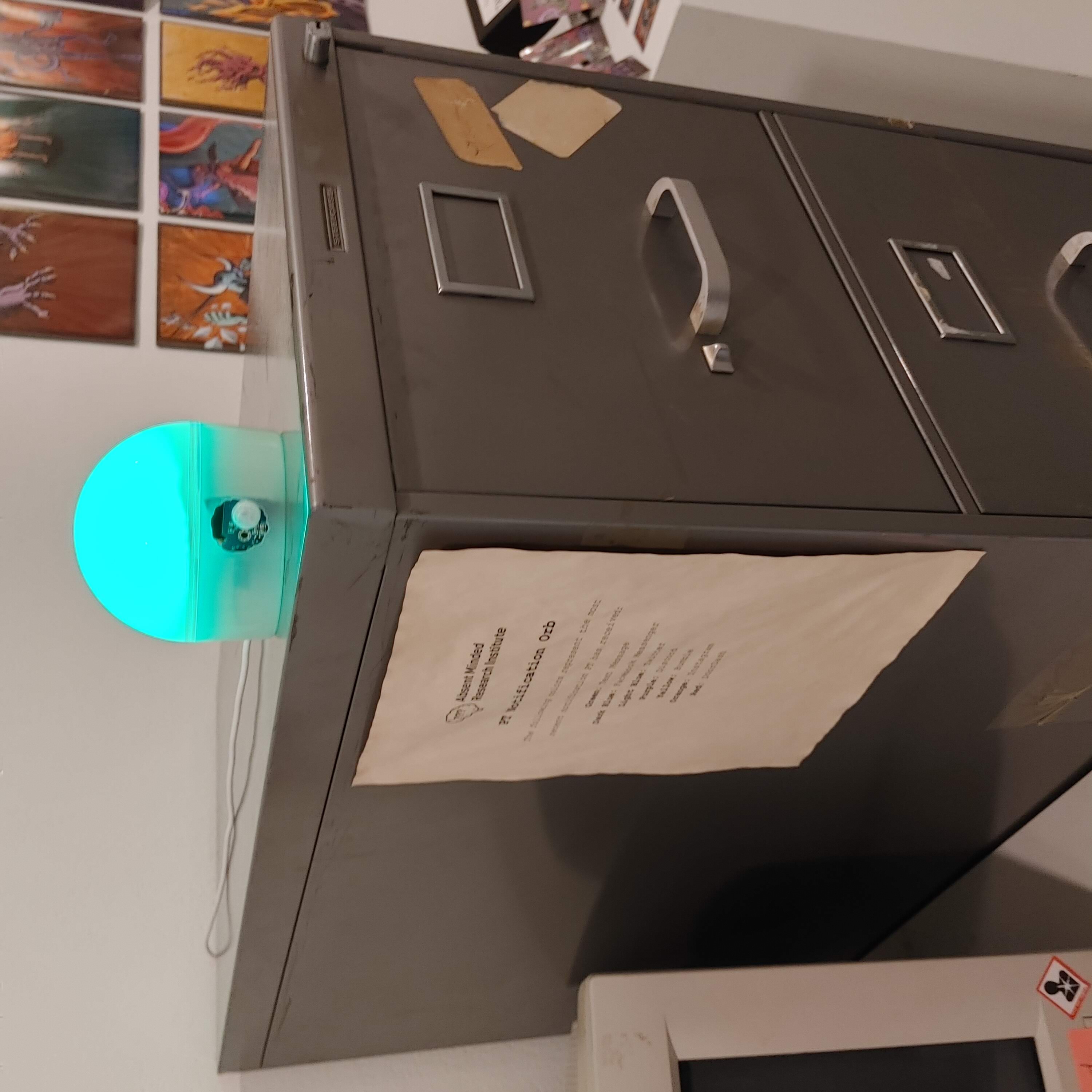
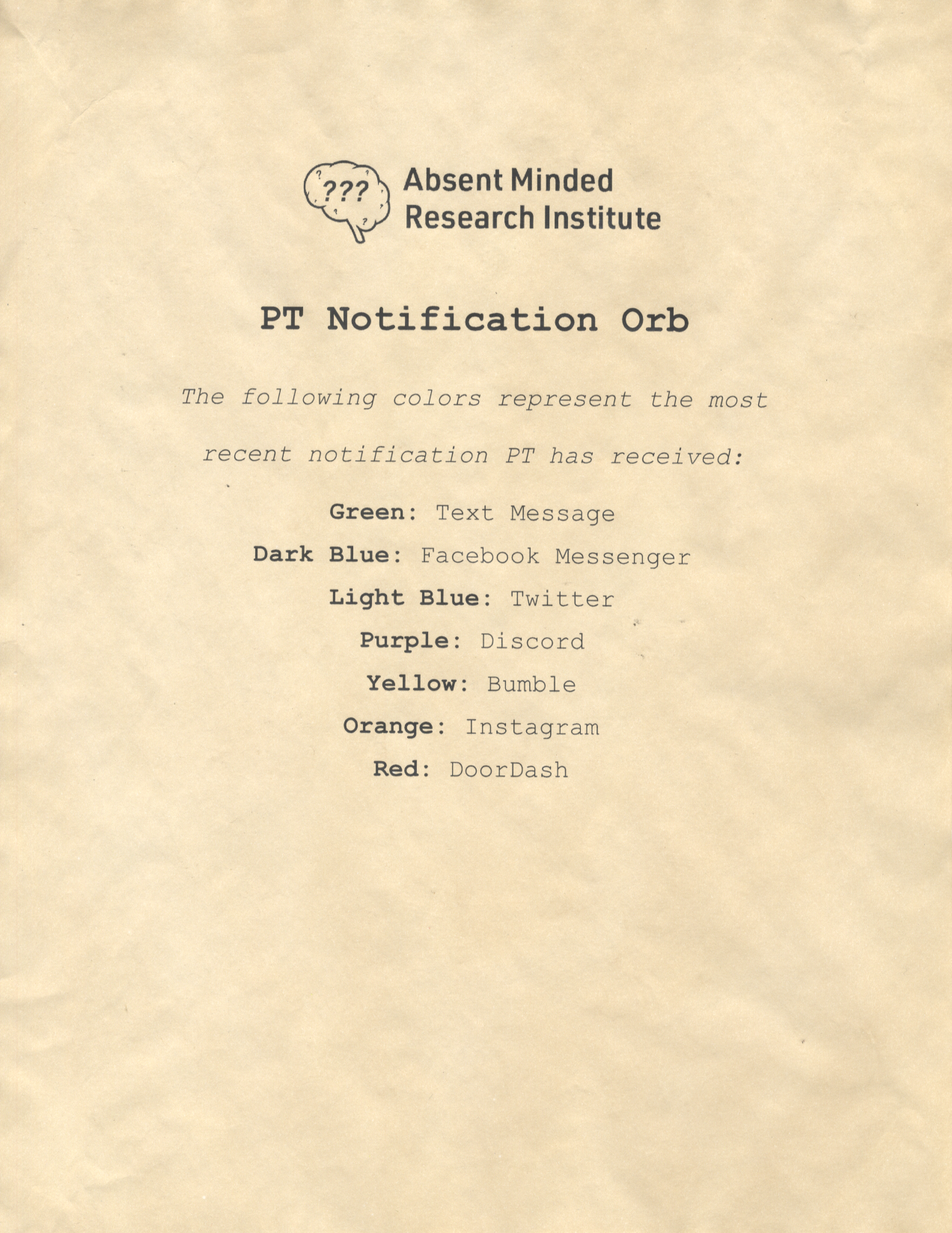
Filing Cabinet
The filing cabinet contains a variety of miscellaneous ephemera, including spools of the behavior logs, old medicine bottles, as well as a strange maid’s dress, that has been modified with LED lights that react to sound.

